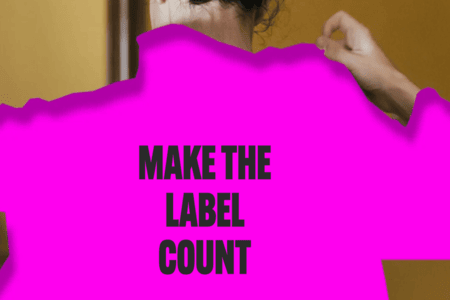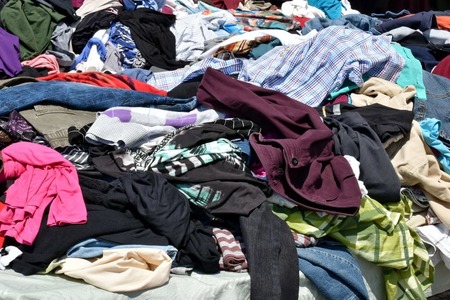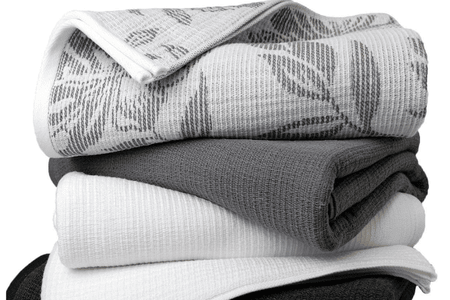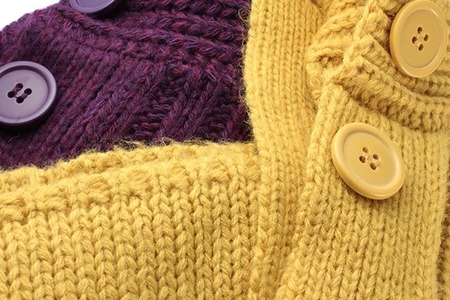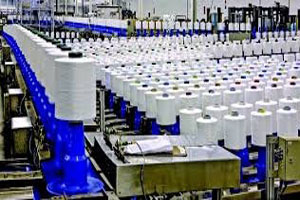
US textile makers look for a revival through technology advances
YarnsandFibers News Bureau 2017-06-20 10:00:00 – New YorkU.S. textile and fiber makers see their business finally turning around with shipments of textiles and apparel increasing to $74.4 billion last year, an 11% increase since 2009, when the industry hit bottom during the economic slowdown and also losing market share to imports, according to National Council of Textile Organizations (NCTO).
Textile makers have gained competitiveness over the past seven years through technology advances, automation, and productivity improvements. At the March meeting of the NCTO, a group representing domestic textile manufacturers, outgoing chairperson Robert H. Chapman III thanked the new Trump policy dynamic, the next 12 months represent the best opportunity in a generation to reorient U.S. manufacturing policy, level the playing field, and usher in a new era of growth for U.S. textile makers.
Companies including the yarn maker Unifi, antimicrobial fabric developer PurThread Technologies, waterless fabric finishing firm APJeT, and smart fabric developer BeBop Sensors have all developed value-added product niches. Even fiber makers such as Eastman Chemical have come out with new fiber variants that go well beyond the usual commodity offerings.
Overseas textile makers are also recognizing the U.S. as a vibrant investment location with abundant raw materials, cheap energy, and new policies that favor local manufacturers. For instance, China’s Keer Group recently completed a $218 million cotton yarn spinning plant in South Carolina. Another Chinese firm, Sun Fiber, recently started up a plant in the same state to make polyester fiberfill from recycled bottles.
But the bad news is that economic forces still favor textile imports. Annual U.S. textile and apparel imports exceed $125 billion, according to the Department of Commerce. China is the largest source of imported textiles, followed by Vietnam and India.
The U.S. was once a leader in synthetic fiber production, it now lags. Out of the 45 million metric tons of polyester fiber produced globally last year, about 3% was made in the U.S., said Bob Merrill, a polymer expert at the consulting firm IHS Markit.
However, a lot of great work is going on in the U.S. textile industry, but these innovations are going to change the textile road map, or will they just be specialty advances without a dramatic impact on fiber production is a question.
Lloyd Wood, an NCTO spokesperson, acknowledges that job losses due to imports from China and other Asian countries have been severe since the mid-1990s. Yet the U.S. industry has stabilized and is now competitive.
The Atlanta-based company is developing what it calls Sewbots, which could replace human sewing machine operators. Home goods and automotive textile makers are already employing the robotic machinery, the firm says.
But the industry’s productivity drive means that the demand for textile technical experts has never been higher, according to David Hinks, dean of the North Carolina State University College of Textiles.
Textile makers are eagerly hiring school graduates, who include management experts, polymer chemists, and textile dye specialists, Hinks said. Three months after graduation, about 90% of graduates find jobs in the industry. NCSUCT also collaborates with textile industry companies to develop new technology.
Among the firms that worked with the school is PurThread, a developer of antimicrobial yarn technology. With help from the school and others, PurThread developed a method to introduce silver salts into polyester resin before it is extruded into a fiber.
Founded in 1999, PurThread buys its Environmental Protection Agency-registered silver ingredient from Eastman Kodak, the former photographic film giant, said Lisa Grimes, PurThread’s chief executive officer. A target market is soldiers who may have to wear clothing in the field for an extended period of time.
Fashionistas may also benefit. The antimicrobial threads can maintain the new look of denim longer by avoiding frequent washing, Grimes said.
Other U.S. firms are also introducing fiber and yarn additives that provide special attributes. Once the additives go into the polyester and nylon yarns that Unifi extrudes, “they’re in the fabric for life, said Jay Hertwig, a vice president.
Additives in Unifi’s yarns include phosphorus-based flame retardants. Polyester curtains containing the additive will still melt in a fire, but they won’t ignite and encourage flame spread. Other Unifi yarns contain additives that repel water and protect fabric from the degrading effects of ultraviolet light.
In addition to using virgin polymers to produce its yarns, Unifi has developed a line of fibers, sold under the Repreve name, made from recycled polyester bottles. The company operates its own recycling center that converts bottles into polyester chips. A chemical tracer added to the polyester allows customers to verify the recycled content.
New technology is also coming to textile finishing. Like PurThread, APJeT developed its technology at NCSUCT. The firm’s atmospheric pressure plasma jet technology, based on know-how from Los Alamos National Laboratory, uses a blend of gases to apply water-repellent, fire-retardant, and soil- and stain-resistant fabric finishes.
APJeT claims that its process completely eliminates the large amounts of water necessary to finish most textiles. It also says the process uses only 10% of the chemicals needed in traditional fabric finishing.
Also infusing new life into textile fibers are traditional fiber makers. In January, Eastman Chemical launched a new acetate fiber, dubbed Naia, made with wood pulp “derived exclusively from sustainably managed and certified forests.â€
And last year, in partnership with Unifi, Eastman launched Avra fibers, made by extruding polyester into fibers too thin to be woven or knitted on their own. The fibers are held together by a polymer that is washed away after the fabric is made. Sports apparel made with Avra has a silky feel and is able to wick moisture away from the skin, Eastman says.
Beyond new fibers and yarns, some innovators are looking to embed textiles with sensors to create “smart fabric.†Keith McMillen, who heads BeBop Sensors in California, explains that his firm does this by chemically treating fabric with conductive polymer coatings.
When a user stretches or puts pressure on the fabric sensors, current flow is affected, McMillen says. Printed electronic traces bring signals from the sensors to a computer chip that can measure a runner’s gait, monitor a wearer’s heart rate, or sense a person’s body temperature.
Market Intelligence
Ask for free sample Report

experience
Customer Base
dedicated team
Countries Served Worldwide




